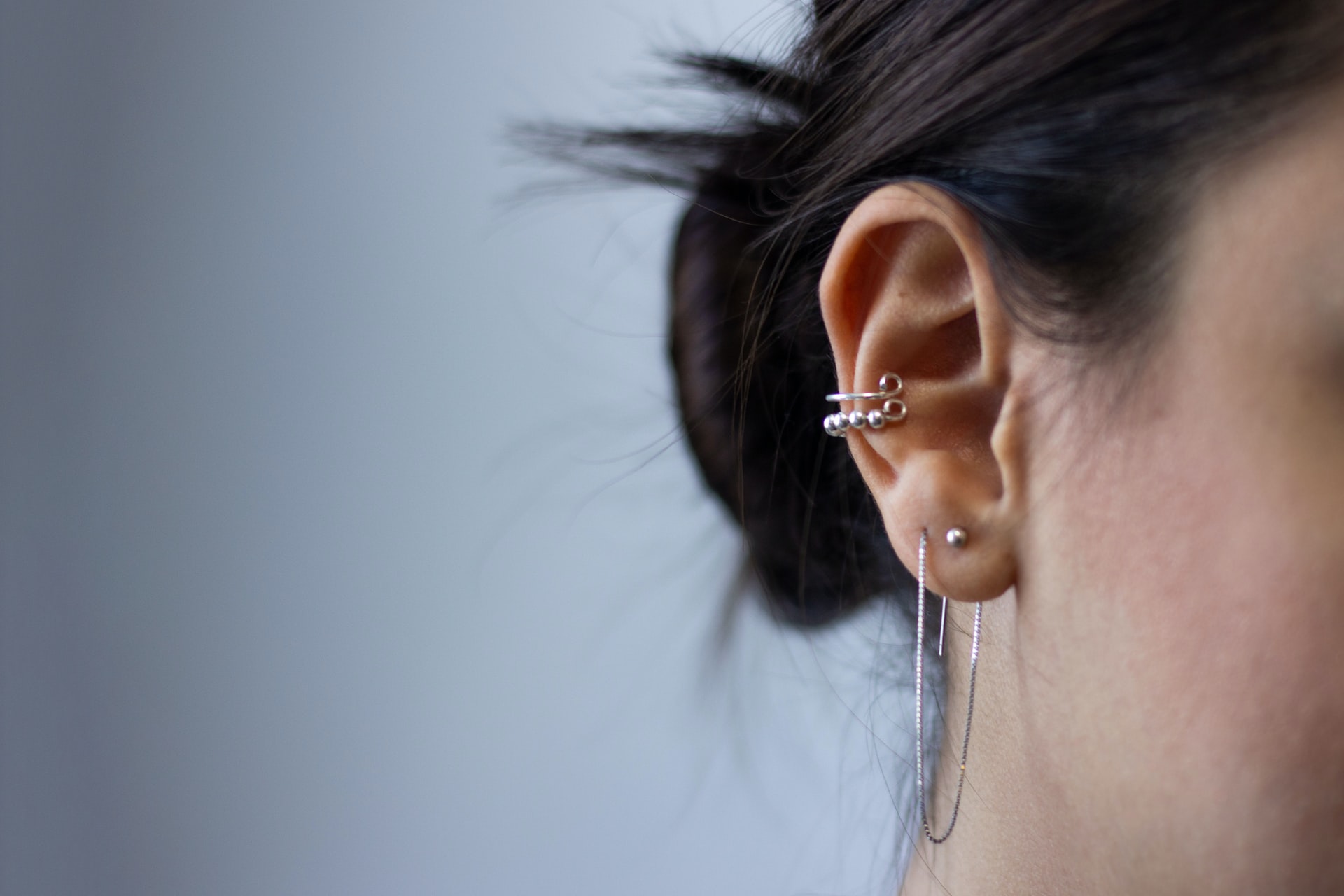The helix piercing is one of the most famous ear piercings you can get. Celebrities like Emma Watson, Dua Lipa and more have been seen rocking a helix piercing. Not only is it easy to stack with other ear piercings but it is also suitable for professional places. But what exactly is a helix piercing and how do you take care of it? Read down below! Let’s start with the basics.
Definition
A helix piercing is pierced through the cartilage, making it a cartilage piercing. You have different types of helix piercings: low helix, mid helix and even a double helix. When getting a double helix, the piercer will pierce 2 helix piercings next to each other, making it a “double”- piercing. If you’re wondering what the cartilage is, it is the harder part of your ear. The ear exists of your earlobe and the cartilage. Most ear piercings are pierced through the cartilage. The other ear piercings, that aren’t pierced through the cartilage, would be called earlobe piercings. The name already speaks for itself; a piercing through the earlobe.
Does a cartilage piercing hurt?
Even though pain is subjective, getting a piercer can described getting pierced as getting pinched and then a warm feeling. For some it may hurt more, for some it may hurt even less. It truly depends on the person. If you’re worried about the piercing hurting, you might want to ask the piercer about the process of getting pierced. Getting an infection after getting pierced will hurt. Make sure your piercer is working with sterile needles.
What to prevent?
There are many things you can and cannot do after getting a piercing. For example, try to put as little pressure as possible on your piercing. You can do this by sleeping on the opposite ear; this puts the pressure on the ear that has not been freshly pierced. It is also one of the reasons piercers will recommend getting a cartilage piercing on only one side and waiting until that one is healed before getting one on the other side. Or else it will be difficult to side on how to sleep. In case you do decide on getting both ears pierced at the same time, we would recommend using a travel pillow to put as little pressure on both sides as possible.
How to take care of a piercing?
Aftercare takes up a big part of getting a piercing. It influences the healing process and the possible scarring it leaves. It is recommended to use a sterile, saline solution to clean your piercing at least twice a day. If you do not have a sterile, saline solution, you can use running water or make your own salty piercing bath.
Material
The material of the piercing itself also has a role in how your ear will react to the piercing. Do not be fooled by “chirurgical steel”. This material can contain nickel, which is the metal most people have an allergy to. When you buy cheap earrings and your ears get irritated by it, it is very likely for you to have an allergy to nickel. Instead of buying chirurgical steel earrings, you might want to opt for Implant grade titanium, which does not contain any nickel.











